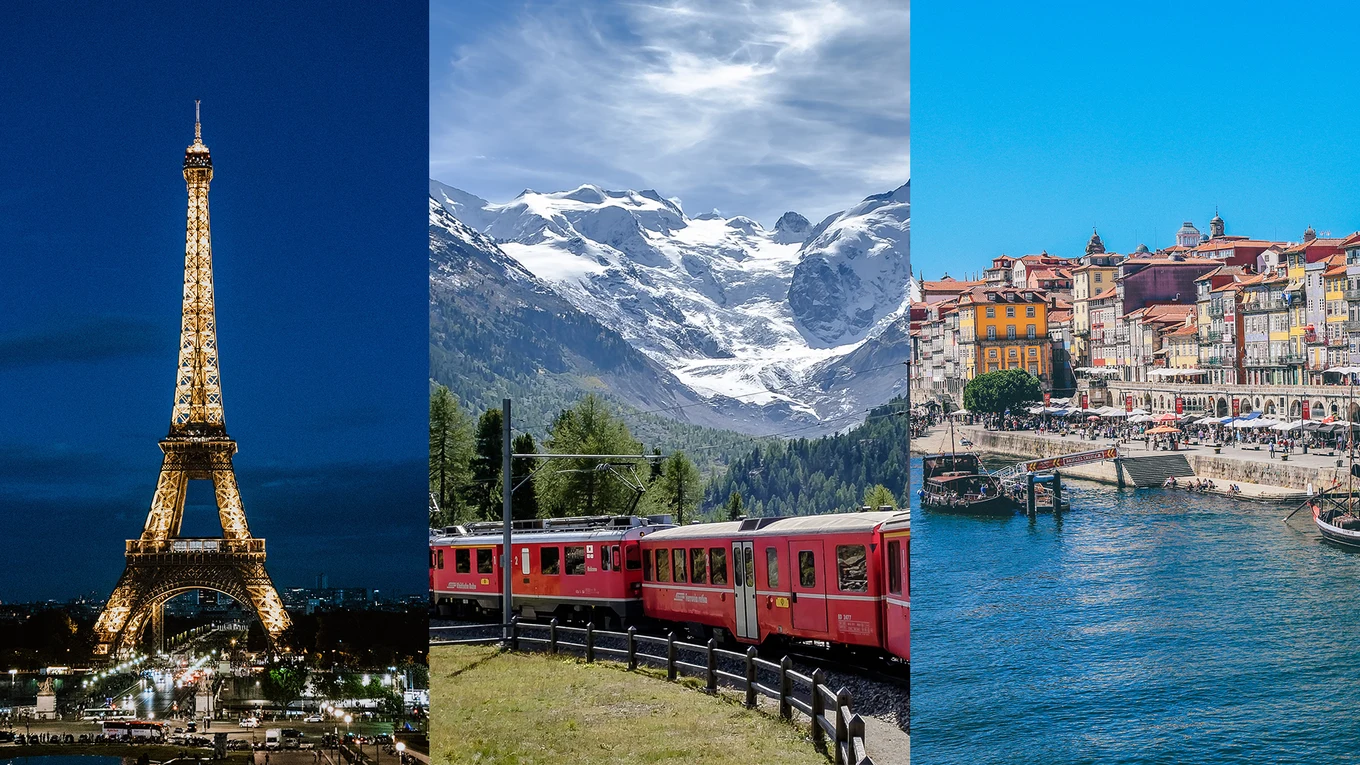Can’t pick which countries to visit for your much-awaited European holiday? Interrail has you covered.
With just one pass, you can travel around 33 countries. Want more time to explore and ski in the Swiss Alps? Or do you want to soak up the sun and live la dolce vita (aka the sweet life) on the Italian coast? No problem, since the pass gets you unlimited train access for an entire month!
We’ve broken down the basics and gathered all the essential info, so you can make the most out of the Interrail Pass:
- What is the Interrail?
- How do you use it?
- How much does it cost?
- Which countries are included?
- What else is good to know?
1. What is the Interrail?
The Interrail Pass gives European residents access to 40 railway and ferry networks across the continent. It’s designed to let you have the freedom and flexibility to discover different destinations, whether it’s north, south, east, or west of Europe.
Planning to use it to travel around your own country? You can use the Interrail Global Pass for one outbound and one inbound journey in your country of residence at any time during your pass’ validity.
If you’re not a citizen or a permanent resident of Europe, you can travel with the Eurail Pass instead. Both passes give users access to train and ferry networks, but Interrail is designed for citizens while Eurail is for visitors.
2. How do you use it?
The Interrail Pass can be used in three different modes of transportation:
- By train
For most railway trips, you can board the train just by choosing a trip on the Rail Planner app and showing the QR code from Interrail. But high-speed and night trains typically require reserved seats.
For such cases, you will need to book a reservation and pay a fee, ranging from €10 to €20. The great thing about reserved seats is that they usually come with benefits like WiFi access and power sockets, plus you can sit together with your travel companions.
You can check the Interrail website to see if you need a reservation for the train you want to access.
- By public transport
In addition to long-distance domestic and international trains, you can also use your handy Interrail Pass on public transport in select countries! Board the S-Bahn and explore Germany, Switzerland, and Austria (Vienna and Innsbruck) without any problems. You can also use your pass to ride the buses in certain areas of Sweden.
- By ferry
Enjoy big discounts of up to 50% using your Interrail Pass on ferry rides with participating companies. Save time and money as you sail along with Spain’s scenic Mediterranean islands, France’s coastal beaches, Switzerland’s captivating lakes, and more.
Select passes, like the 6-day Greek Islands Pass, which includes two crossings between Italy and Greece, can be used to travel by ferry for free.
3. How much does it cost?
Whether you want to explore a single country in-depth or see as many as you can, Interrail has a pass for you.
With the One Country Pass, you can enjoy unlimited train travel in three days for as little as €51. There are also options for six and eight-day passes for around €113 and €262 respectively, depending on the country. For something even longer, Interrail also offers a 15-day pass worth €375 for travelling around Germany.
If you have more than one country on your European bucket list, the Global Pass is for you. For €185, hop on and hop off trains for four full travel days in whatever country you like. You can also opt for a seven-day pass worth €251!
All of the aforementioned passes are valid for a month, but if you’re going on a longer stay, you can also opt for a pass that’s valid for two months (worth €548) and three months (worth €677).
Are you travelling with the entire fam? Interrail offers special discounted rates for kids, youth, and senior citizens. Here’s how it works:
- Kids - All kids under the age of 12 can travel for free, but children aged 4 to 11 need a Child Pass. Up to 2 children can travel with 1 adult.
- Youth - Passengers aged 12 to 27 can get a discounted Interrail Pass.
- Senior - Travelers aged 60 and over can also get passes at special rates.
*The age is based on the start date of the Interrail Pass.
4. Which countries are included?
Depending on the pass you choose, you can enjoy train travel to various countries. Interrail’s Europe One Country Pass includes the following territories:
- Austria
- Bulgaria
- Croatia
- Czech Republic
- Denmark
- Estonia
- Finland
- France
- Germany
- Great Britain
- Greece
- Greek Islands
- Hungary
- Ireland
- Italy
- Latvia
- Lithuania
- North Macedonia
- Norway
- Poland
- Portugal
- Romania
- Serbia
- Slovakia
- Slovenia
- Spain
- Sweden
- Switzerland
- The Benelux
- Turkey
Meanwhile, the Global Pass includes all the 29 countries above plus the following:
- Belgium
- Bosnia-Herzegovina
- Luxembourg
- Montenegro
5. What else is good to know?
If you want to avoid reservation fees, opt for regional trains over high-speed or night trains. They’re usually slower and have more stops, but they’re a great way to discover hidden gems that you might have missed.
If you’re sure that you want to take a high-speed or night train, though, make sure to book a reservation as early as possible (usually three to six months prior). Seats may run out, especially during peak tourist season!
Although Interrail includes access to 40 train networks all over the continent, it does not include buses, metro, trams, and other forms of public transportation.
























